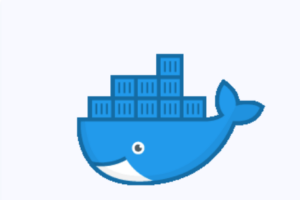VMware vRealize Automation: Advanced Features and Troubleshooting [V8.x]
È un corso di cinque giorni che fa seguito al corso VMware vRealize® Automation™ Install, Configure, Manage. In questo corso si approfondisce l’utilizzo delle funzionalità avanzate di vRealize Automation per distribuire sistemi utente e interfacciare vRealize Automation con altre piattaforme. Il corso copre la distribuzione di un ambiente cluster di livello aziendale utilizzando VMware vRealize® Suite Lifecycle Manager™.
COD: VRAAFT8
Categorie: VMware

Metodologia didattica
Il corso prevede laboratori didattici in cui ciascuno studente potrà lavorare ai fini di portare a termine esercizi formativi che forniranno esperienza pratica nell’utilizzo dello strumento, per ciascuno degli argomenti affrontati durante il corso.
Chi dovrebbe partecipare
Amministratori di sistema esperti e integratori di sistema responsabili dell’utilizzo delle funzionalità avanzate di vRealize Automation nelle implementazioni aziendali.
Prerequisiti
È richiesto il completamento del seguente corso:
Dell’esperienza nell’utilizzo della linea di comando è utile.
Questo corso richiede che lo studente sia in grado di eseguire le seguenti operazioni senza assistenza o guida prima di iscriversi al corso:
- Creare oggetti VMware vCenter Server®, come data center e cartelle.
- Creare una macchina virtuale utilizzando una procedura guidata o un modello.
- Modificare l’hardware di una macchina virtuale
- Migrare una macchina virtuale con VMware vSphere® vMotion®.
- Migrare una macchina virtuale con VMware vSphere® Storage vMotion®.
- Configurare e gestire un cluster VMware vSphere® DRS con pool di risorse.
- Configurare e gestire un cluster VMware vSphere® High Availability.
- Creare e distribuire un semplice blueprint in vRealize Automation 8.x.
- Utilizzare cloudConfig nei blueprint di vRealize Automation.
- Configurazione dell’infrastruttura in vRealize Automation 8.x
Conoscenze/Competenze in uscita
Al termine del corso, dovreste essere in grado di raggiungere i seguenti obiettivi:
- Creare e configurare blueprint avanzati con YAML e cloudConfig complessi.
- Utilizzare i blueprint avanzati di vRealize Automation per distribuire un server DB a due livelli utilizzando MySQL e phpMyAdmin.
- Esercitare le tecniche di risoluzione dei problemi con blueprint YAML avanzati in vRealize Automation.
- Utilizzare le funzionalità di rete avanzate di VMware NSX-TTM Data Center, tra cui NAT, reti instradate, bilanciatori di carico, gruppi di sicurezza e tag.
- Configurare le sottoscrizioni per utilizzare i flussi di lavoro di VMware vRealize® Orchestrator™ e creare azioni personalizzate utilizzando XaaS.
- Configurare e utilizzare le azioni ABX nelle sottoscrizioni di vRealize Automation.
- Descrivere le varie opzioni per integrare vRealize Automation con Kubernetes.
- Creare pipeline VMware Code Stream™.
- Configurare vRealize Automation per integrarlo con strumenti di gestione della configurazione come Puppet e Ansible.
- Creare e utilizzare playbook Ansible che si integrano con vRealize Automation.
- Configurare i certificati di sicurezza in vRealize Automation da autorità di certificazione esterne.
- Configurare VMware NSX® Advanced Load Balancer™ per distribuire VMware Identity Manager™ e i cluster di vRealize Automation.
- Descrivere le fasi di distribuzione e scale-out dei cluster VMware Identity Manager e vRealize Automation.
- Descrivere l’architettura di distribuzione in cluster, compresi i pod e i servizi Kubernetes.
- Utilizzare i comandi vracli, i file di registro e VMware vRealize® Log Insight™ per la risoluzione dei problemi di vRealize Automation e delle implementazioni di vRealize Automation.
Programma didattico
1 Introduzione al corso
- Introduzione e logistica del corso
- Obiettivi del corso
2 Blueprint avanzati
- Utilizzare YAML e cloudConfig avanzati per distribuire un’applicazione a due livelli funzionante con un server front-end phpMyAdmin e un server di database MySQL.
- Utilizzare le tecniche di risoluzione dei problemi per eseguire il debug dei problemi nei blueprint YAML avanzati.
- Elencare i file di log che possono aiutare a risolvere i problemi di distribuzione dei blueprint.
3 Networking avanzato
- Utilizzare le funzionalità avanzate di NSX-T nei blueprint
- Interfacciamento con IPAM
- Utilizzo di NSX-T Data Center NAT nei blueprint
- Utilizzo delle reti instradate di NSX-T Data Center
- Utilizzo dei bilanciatori di carico di NSX-T Data Center
- Utilizzo dei gruppi di sicurezza di NSX-T Data Center
- Utilizzo dei tag con i profili di rete di NSX-T Data Center
4 Utilizzo dei flussi di lavoro di vRealize Orchestrator per l’estensibilità
- Creazione di azioni del giorno 2 con i flussi di lavoro di vRealize Orchestrator
- Risoluzione dei problemi del cluster di vRealize Orchestrator
- Utilizzare vRealize Orchestrator per aggiungere oggetti computer ad Active Directory quando vRealize Automation distribuisce i blueprint.
- Utilizzare un approccio di tagging ai flussi di lavoro di vRealize Orchestrator
- Utilizzo di moduli dinamici con vRealize Orchestrator
5 Utilizzo delle azioni ABX
- Determinare quando utilizzare ABX e quando utilizzare vRealize Orchestrator
- Utilizzo di ABX per creare azioni day-2
- Chiamare PowerShell da ABX
6 Amministrazione Kubernetes
- Definire le terminologie di base di Kubernetes, come pod, servizio e deployment.
- Elencare le varie opzioni per integrare vRealize Automation con Kubernetes.
- Collegarsi a un cluster Kubernetes nativo esistente
- Integrare Kubernetes con VMware® Pivotal Container Service
7 Amministrazione del flusso di codice
- Creare e utilizzare pipeline CI/CD
- Utilizzare l’interfaccia utente di Code Stream
- Aggiungere stati e task a una pipeline Code Stream
8 Integrazione di vRealize Automation con GitLab
- Definizione di Git, GitLab e GitHub
- Configurare GitLab per supportare i blueprint di vRealize Automation
- Integrare vRealize Automation con GitLab
- Gestire i blueprint utilizzando il controllo sorgente GitLab
9 Gestione della configurazione
- Descrivere il caso d’uso di Ansible e Ansible Tower
- Connettersi ad Ansible Tower
- Utilizzare i playbook di Ansible
- Utilizzare Puppet nella gestione della configurazione
10 Distribuzione in cluster
- Utilizzare vRealize Suite Lifecycle Manager in una distribuzione in cluster
- Configurazione di certificati esterni
- Configurazione del bilanciatore di carico del Data Center NSX-T
- Installare o scalare VMware Identity Manager per supportare l’High Availability
- Installare o scalare vRealize Automation utilizzando l’implementazione in cluster
11 Architettura di distribuzione in cluster
- Elenco dei Pod Kubernetes
- L’architettura Kubernetes di vRealize Automation
- Relazione tra i pod Kubernetes e i servizi
- Log e loro posizione
- Flusso di lavoro di distribuzione del blueprint con interazione con i servizi Kubernetes
- Strategie di backup e potenziali problemi
12 Risoluzione dei problemi di vRealize Automation
- Comandi vracli e quando usarli
- Controllare lo stato dei pod e dei servizi Kubernetes
- Correggere lo stato di pod e servizi
- Diagnosticare e risolvere i problemi dell’infrastruttura di vRealize Automation
- Diagnosticare e risolvere gli errori di vRealize Automation nella distribuzione di blueprint e servizi.
- Utilizzare vRealize Log Insight per la risoluzione dei problemi.
Durata – 5 giorni
Erogazione – in Aula, On Site, Remoto
Requisiti PC e SW:
- Connessione Internet
- Web browser, Google Chrome
- Zoom
Language
Trainer: Italiano
Labs: Inglese
Slides: Inglese










